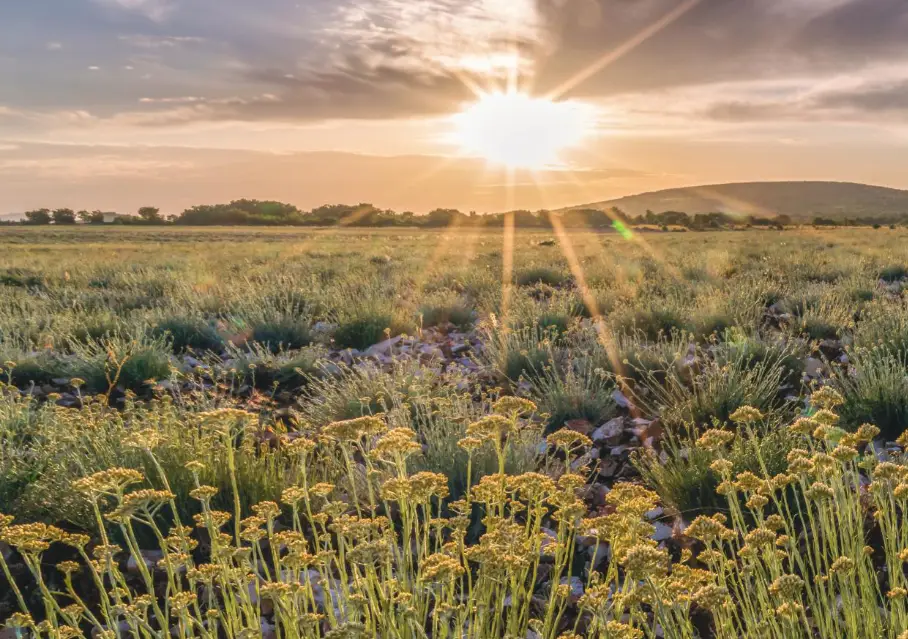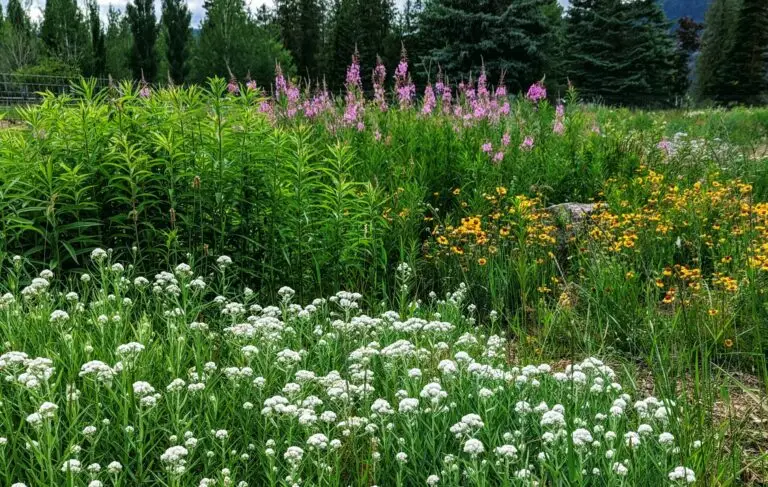Global Efforts
Regenerative Farming


Essential Botanical Farms and Forest’s regenerative farming practices mimic natures fertility systems such as you would find in a forest or jungle. Two practices are the key to this achievement:
- minimal disc and tilling
- targeted beneficial cover crops
These organic practices build the soil back into living systems by connecting the microbiome to the atmosphere and restoring natural carbon and nitrogen cycles. With this achieved, both the soil and cover crops release oxygen to the atmosphere.
The soil’s structure also becomes a natural part of the watershed, storing massive amounts of water and becoming a natural water filtration system that limits erosion and agricultural runoff.
Our operations also create habitats in our production fields that support local native pollinators such as honeybees, flies, butterflies, beetles, moths, bats, birds, and other animals.
Our team takes great care and pride in reaching our full potential as holistic land managers. We do not simply try to minimize our footprint, but we continuously build net positive benefits for the ecosystems we operate in. From the tiny micros in the soil to the diverse wildlife living in our lands.

Each North American farm within the monarch butterfly range has a registered monarch waystation. At these waystations, we’ve planted milkweed for the butterflies along with native plants to increase the native pollinators in the area.
Our Utah farm has the biggest waystations of all our locations, with 65,340 sq. ft. of farmland dedicated exclusively to providing pollinators with native plants and flowers, and butterflies with the native milkweed they need to survive their migration.
Similarly, in South America our Native Pollinator project encourages native birds and insects to pollinate the dry forest by planting native flowers and setting up Morpho feeding stations. Our Meliponarium project protects native bees, including lesser-known species like stingless bees, which are crucial for pollination.
Our team in France has incorporated safe and sustainable beekeeping practices such as keeping their diet sugar free and leaving more than half their honey so they always have food for the winter. The team also carefully removes the bees with bee brushes installed on the equipment so the insects aren’t harmed by the tractors at harvest time.
Reforestation


Our farms take reforestation seriously and we sustain several reforestation projects of various trees and plants around the globe.
Thousands of Black Spruce, Lodgepole Pine, Blue Spruce, and White Spruce trees in Canada and Northern Idaho have been reforested. Saplings are planted in our greenhouses and more than 20,000 oxygen-producing conifers have been planted over the years.
In the big Island of Hawaii we sustain the Hawaiian Sandalwood Reforestation project. Sandalwood is 1 of 13 different native species that we use in our reforestation efforts. The seeds for all 13 species are collected by hand, propagated in our greenhouse, and then planted in an area that spans over 40,000 acres. Our forest management plan dictates that only dead and/or dying sandalwood trees can be harvested and used to produce Sandalwood oil and floral water. This helps to maintain the ecological balance on the island and aligns with the deeply rooted Hawaiian belief in humans’ respectful relationship with the land.
In South America the orquidarium shelters native endemic orchids rescued from nearby forest clearings. Through propagation efforts and in-vitro reproduction, we strive to increase their survival rates and reintroduce them into protected forests.
Similarly, the Palo Santo Reforestation project in Ecuador focuses on replenishing Palo Santo trees in their natural habitat through seed harvesting and greenhouse cultivation. On the farm, we also have our own Palo Santo Forest, which merges with protected ecological corridors and provides a home to native species. We planted 700 trees on our Palo Santo Forest in Loja in 2023, and we have more than 2,000 saplings in our greenhouse waiting to be transferred and planted during service trips and other conservation projects.
